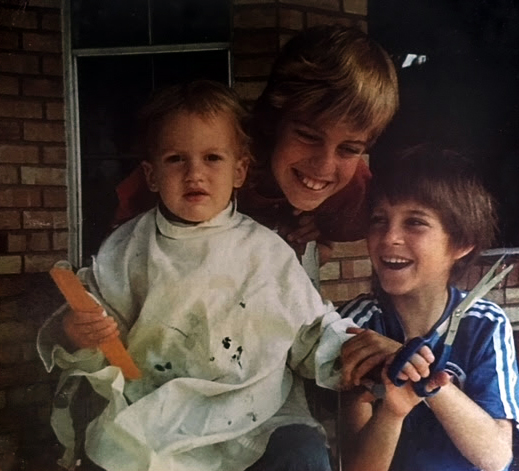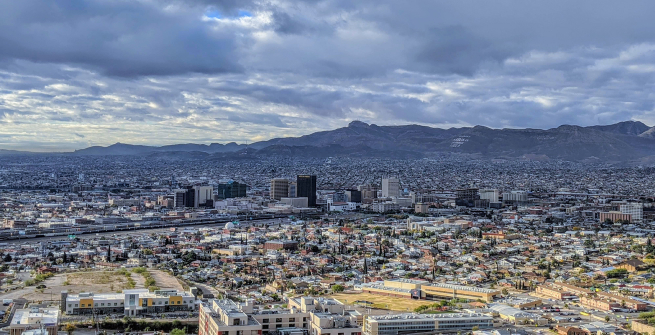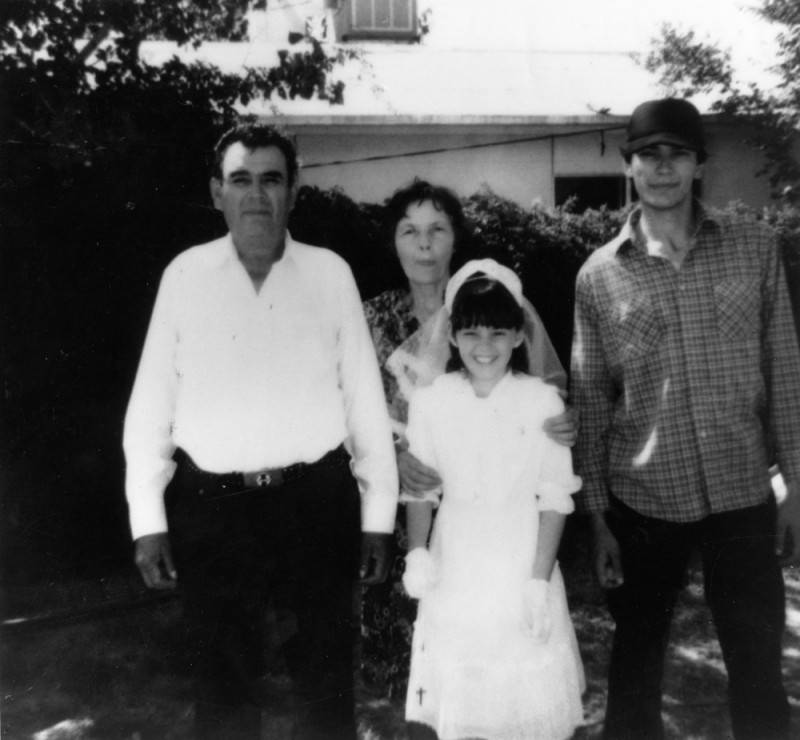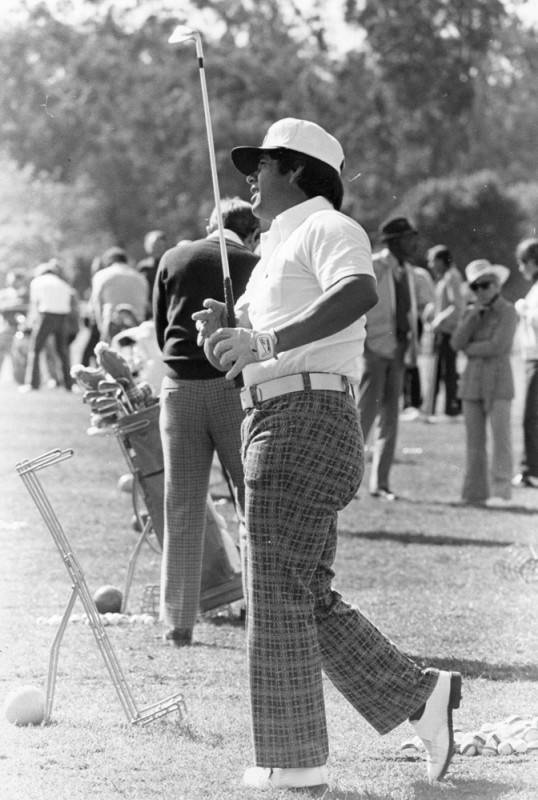I grew up in El Paso in the 1970s and 80s, a city that wraps around the Franklin Mountains out on the tip of west Texas, adjoining Ciudad Juárez across the Rio Grande in Chihuahua and a short drive from New Mexico to the north.
When I was a kid, we had only one local celebrity that I knew of—Jay J. Armes, private eye and would-be action hero, who had lost his hands in a childhood accident and performed his investigative exploits with the help of interchangeable prosthetics including hooks and pistol-attachments. One of his big cases involved rescuing Marlon Brando’s son from a kidnapping attempt. My school bus route would take us past Armes’ walled compound out on the west side of town, which was reputed to contain his menagerie of lions, tigers, and what other super-spy lifestyle comforts we could only wonder, staring through the bus windows. In the late 70s, a line of G.I. Joe-like Armes action figures was launched, upgradeable with various plastic gadgets and vehicles. These groovy bionic mini-men in fringed leather vests failed to catch on nationwide, but nowadays, you can sometimes find them for sale on eBay. The Central Library has a copy of his 1976 memoir, Jay J. Armes, Investigator. Armes still lives and practices in El Paso.
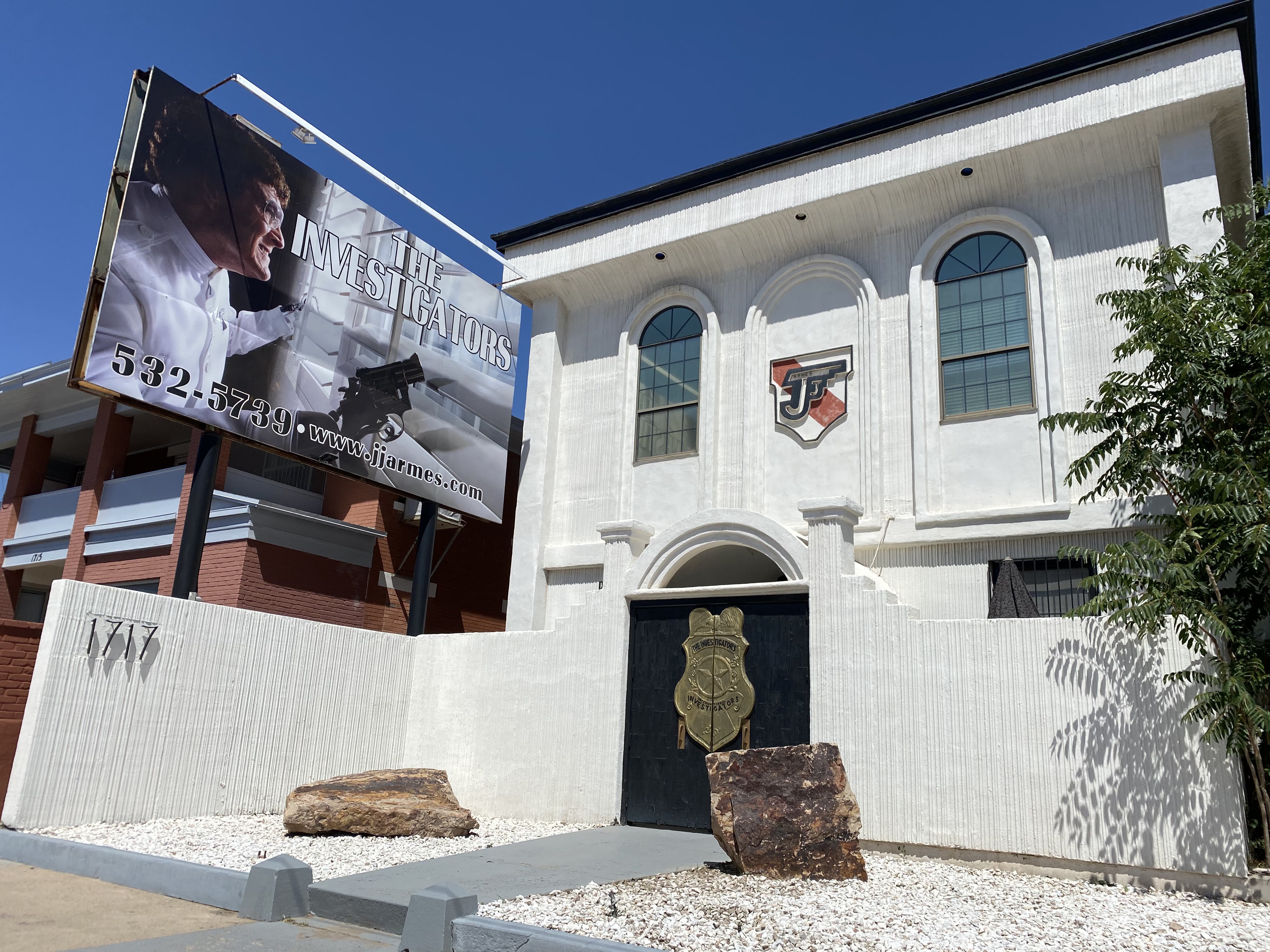
Our other claim to fame was Marty Robbins’ 1959 hit song that begins, "Out in the West Texas town of El Paso...", which people sometimes start singing when I tell them I grew up there. Robbins, born Martin Robinson, was from Phoenix, and decided that El Paso would make a picturesque setting for a cowboy ballad while passing through. He allegedly stopped in at the real Rosa’s Cantina and was struck with inspiration for his song about the love of a doomed cowpoke for one Feleena—obviously not the name of any actual Mexican girl. I seem to recall that our citizenry was mostly disdaining this corny mariachi-flavored tune, but it has grown on me over the years, thanks in part to the many live versions performed by the Grateful Dead. Robbins followed up his hit with two more installments, "El Paso City" and "Feleena (From El Paso)," all of which can be enjoyed on the Essential Marty Robbins. Rosa’s Cantina, an old cinderblock and stucco dive bar on Doniphan Drive, still serves drinks.
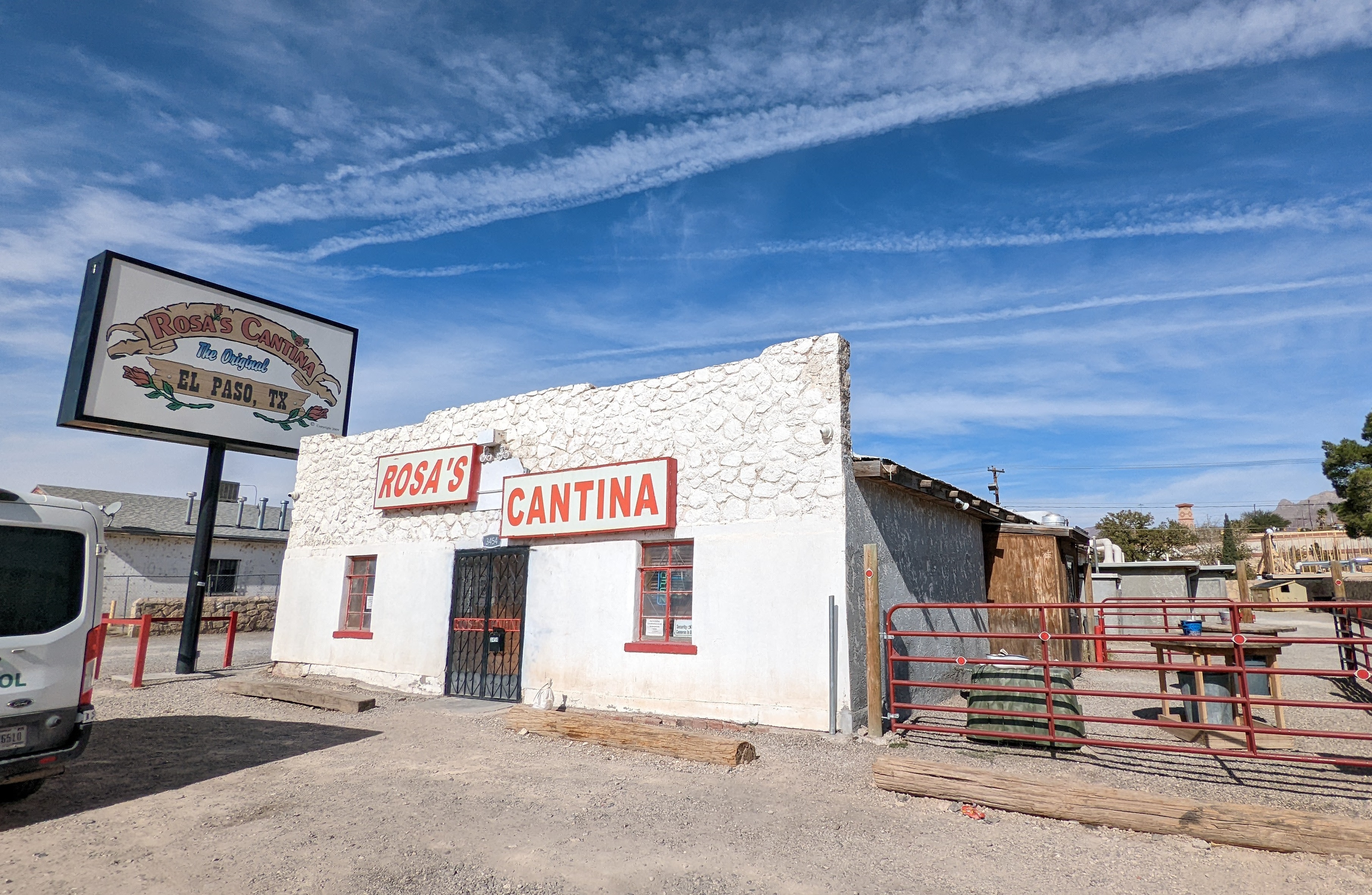
Since then, I have collected noteworthy El Pasoans, and I am always pleased when I discover a new one. Many of our big names were not there long, or passed through as children when their army fathers were stationed at Fort Bliss. But we generally take credit for anyone interesting who was either born there or completed a minimal term of residency.
We were very proud of F. Murray Abraham in 1984 when he won the Oscar for Best Actor as Salieri in Amadeus—he hadn’t lived in El Paso for decades. Still, he did grow up there and briefly attended Texas Western College (now the University of Texas at El Paso or UTEP). Gene Roddenberry, the creator of Star Trek, was born in El Paso, but moved away with his family at age two. Actress Debbie Reynolds, folksinger Phil Ochs, Supreme Court justice Sandra Day O’Connor and actor and playwright John Cameron Mitchell also fall under this zero-to-toddler category. The writer Lucia Berlin, whose Raymond Carver-esque stories are now enjoying posthumous reappreciation, and Ron Stallworth, the FBI agent who infiltrated the Ku Klux Klan as portrayed in Spike Lee’s BlacKKKlansman, both spent part of their youth there.
Another big El Paso name was, unfortunately, Richard Ramirez, the Night Stalker. While we were elated to read in the newspapers that the man who had terrorized Los Angeles with a savage murder spree throughout 1985 had finally been captured and arrested, we did not exactly soar with hometown pride to learn that Ramirez was an El Pasoan. His violent upbringing by an alcoholic, abusive father, as well his idolizing of a Vietnam veteran cousin who turned him on to booze and pot, helped shape the bestial obsessions he would later unleash in California. While living at the rundown Cecil Hotel on 6th and Main, Ramirez would sometimes wander over to the Central Library. Librarian Glen Creason, profiled by Susan Orlean in her book about the Central Library and the 1986 fire that almost destroyed it, vividly recalls a brief encounter with Ramirez at the history department reference desk in the summer of 1985. Later that summer, after his arrest made headlines, Creason realized the true identity of his creepy visitor.
A number of writers have called El Paso home. John Rechy was born in El Paso in 1931 and attended Texas Western. He went on to write pioneering LGBTQIA and Chicano novels starting with his 1963 debut, City of Night, which chronicled the underground world of gay hustlers. It later inspired Gus Van Sant’s film My Own Private Idaho. The book includes a depiction of the Cooper’s Do-Nuts Riot, a pre-Stonewall uprising in which police who regularly harassed the gay and transgender clientele of a downtown Los Angeles coffee shop tried to arrest Rechy and two others. The cops were heckled and pelted with donuts by the other patrons in protest, allowing Rechy to escape. Novelist and short story writer Rick DeMarinis taught at UTEP for years and wrote many books set along the Texas-Mexico border. Poet and children’s book author Benjamin Alire Sáenz grew up in Las Cruces and lives in El Paso. His 2013 book Aristotle and Dante Discover the Secrets of the Universe, about a pair of teenage friends exploring their emerging queerness, won a Pura Belpré award.
El Paso’s most celebrated author is also its most reclusive. Cormac McCarthy grew up in Tennessee but in the mid-1970s, fell under the spell of the Rio Grande and moved to the Gardner Hotel downtown. Receiving a MacArthur Fellowship in 1981 allowed him to buy an old whitewashed stone cottage where he wrote Blood Meridian, or The Evening Redness in the West, a dark and disturbing book that has grown in stature since its publication such that many now consider it one of the great American novels. McCarthy’s work weaves an alternate borderland of innocence lost, graphic gore, and extremes of character, in stark sentences with the spareness and beauty of the desert. His prestige in American letters, as well as Hollywood, having risen sufficiently, he no longer lives at the house on Coffin Avenue, and is thought to have ascended to a higher plane of El Paso real estate.

For a long time our best-known musician was probably Bobby Fuller, famous for his hit version of "I Fought the Law" with the Bobby Fuller Four. His family moved to El Paso in 1956, where young Bobby got bit by the Elvis bug. He soon evinced his own knack for singing, songwriting, and recording, and his concerts attracted crowds of wild teenage fans. In 1964 Bobby and the band signed to Mustang Records and moved to Los Angeles, where they hit it big with “I Fought the Law”, actually a cover of a song by Buddy Holly and the Crickets. Not long after, Fuller was found dead in his car parked outside his Hollywood apartment, just 23 years old. Unfortunately, the autopsy was rushed and inconclusive—it is not clear whether he was beaten to death, or asphyxiated somehow on gasoline fumes, or both. This has led to various conspiracy theories, rumors of Mafia involvement in Mustang Records, and suchlike. Fuller’s brief but eventful life is chronicled in an excellent book by erstwhile Cramps drummer and Norton Records founder Miriam Linna. His legacy consists of two albums of danceable surf-inflected rock and a few 45s, so solid and joyous they make you wonder how high he could have soared.
In recent decades, more bands and artists have sprung up or moved to El Paso. The post-hardcore band At The Drive-In was started by singer Cedric Bixler-Zavala and virtuoso guitarist Omar Rodriguez-Lopez in the 1990s, attracting an ardent following for their anguished, searing sound and explosive live shows. ATDI disbanded in 2001 and morphed into The Mars Volta, who somehow garnered major-label fame and even a Grammy with a series of histrionic prog-rock albums of increasingly baffling complexity. In that same 1990s El Paso music scene, future U.S. Representative Beto O’Rourke flaunted long hair and a dress as the singer of Foss, old photos of which Ted Cruz tried to use against him in their 2018 battle for Senate. Cruz’ tactic backfired when voters decided O’Rourke’s grungy femme skater look was hot and boosted his poll numbers. Notoriously debauched industrial-rock overlord Al Jourgensen moved to El Paso sometime around 2004, to dry out and lower his profile after decades of pummeling eardrums and scandalizing parents with the sounds of Ministry, Revolting Cocks, Pailhead, 1000 Homo DJs and other Chicago-based miscreants. Touring the country with chain-link fences set up onstage for stage-divers to climb, clad in black leather, studded with piercings, and topped with dreadlocks, Al somehow always felt most at home performing in the Lone Star State, receiving his warmest welcome from our lunatic cowboy fringe. He moved away a few years ago but still visits El Paso occasionally to growl out the weather report for KVIA news on channel 7.
Our newest musical luminary is the moody but lovable R&B sensation Khalid, whose 2017 debut album not only went double platinum but even features a cover shot of him with the Franklin Mountains as a backdrop. Despite rubbing shoulders with everyone from Kendrick Lamar to Billie Eilish, he is a relentless ambassador for his adopted hometown, shooting videos out in the desert, posing with local landmarks and happily accepting the key to the city from mayor Dee Margo, who avowed that Khalid would "forever be from the 915."
In the early 1970s, El Pasoan Lee Trevino dominated professional golf with a string of championships. He grew up poor in a family with an absent father, picking cotton from an early age. An uncle gave young Lee an old club and a few golf balls, and he began practicing obsessively. He started winning events in the late 1960s, and in 1971 won the U.S., Canadian, and British Opens all in a short span, an achievement which got him named Sports Illustrated’s "Sportsman of the Year". He continued to rack up PGA tour wins and unnerve other players with his improbable chip shots well into the 1980s, despite getting struck by lightning out on a course near Chicago in 1975, which caused him to require spinal surgery. When asked what he would do the next time lightning struck he said he would hold his 1-iron club up to the sky, "because not even God can hit a 1-iron." (Golf humor.) The spry octogenarian was captured on a recent viral video showing Tiger Woods some of his fabled wedge technique. In the 1970s, a major eastside thoroughfare was renamed Lee Trevino Drive in his honor.
Another renowned local athlete is luchador Cassandro, El Exótico, born Saúl Armendáriz in El Paso in 1970. In his teens in the mid-80s he began training as a Lucha libre wrestler in Juárez. He started out as a rudo or villain, but a friend soon convinced him to compete as an exótico, one of the drag-themed characters that defy Mexico’s macho wrestling culture with cross-gender style. Many exóticos are straight wrestlers camping it up, but Saúl is gay, and proudly ditched the mask to wrestle as Cassandro, naming himself after an old friend who owned a Juárez brothel. In 1992 he became the first exótico ever to hold a UWA championship. After a stretch of abusing drugs and painkillers, he found spirituality and sobriety and regained his stature in the early 2000s. A 2018 documentary depicts the charismatic Cassandro’s remarkable career and hometown roots, as well as the punishing physical toll a lifetime of Lucha wrestling can take.
The gruff and tenacious Don Haskins coached our basketball team from 1961 through 1999, the UTEP Miners (the university was originally founded as the State School of Mines and Metallurgy). Few things were more exciting for me in my teens than cheering the Miners on to an overtime win against our bitter rivals, Brigham Young University. Back in 1966, Haskins made sports history by being the first coach ever to start a lineup of all black players in the NCAA championship final, against the all white University of Kentucky lineup. Haskins’ team won a resounding victory, which many credit as a key event in ending racial segregation in college basketball. As he wrote in his memoir, he wasn’t trying to make a civil rights statement at the time, just to win the game by starting his five best players. In 2006 Disney made a pretty enjoyable movie out of the story of Haskins’ 1966 season called Glory Road.
Apart from Glory Road, hardly any movies seem to have been filmed in El Paso. How can this be? El Paso has outstanding scenery, decent weather, low overhead, and no shortage of dilapidated western charm, although admittedly, it is a very long drive from L.A. Parts of Quentin Tarantino’s Kill Bill films are nominally set in El Paso, but they were actually filmed in the high desert out towards Joshua Tree. A few scenes in Wild at Heart and Paris, Texas were supposedly filmed in El Paso, but if so they are difficult to spot. The last third of Sam Peckinpah’s excellent 1972 heist film The Getaway takes place in El Paso, after Steve McQueen robs a bank in San Antonio and heads for the border with Ali McGraw. There’s a big shootout at the long-gone Laughlin Hotel downtown, demolished decades ago to make way for our local minor-league baseball team’s new stadium. The climactic mayhem of 1977’s Rolling Thunder, one of Tarantino’s favorite films, is portrayed as taking place in El Paso and Juarez, but from all the greenery and palm trees it was obviously filmed in some more tropical border town like Del Rio-Ciudad Acuña.
Perhaps the true opus of El Paso cinema is…Manos: The Hands of Fate. This strange 1966 no-budget supernatural thriller tells the story of a vacationing family that gets lost in the El Paso desert. They wind up at the home of the undead, cape-wearing Manos, who appears late in the film after we meet his drunken manservant, Torgo, and his six sand-wrestling wives. There can be no doubt that each and every frame of this z-grade movie was shot in El Paso. Made by fertilizer salesman Harold P. Warren on a bet, it instantly sank into obscurity until exhumed in 1993 by Mystery Science Theater 3000, where it was mercilessly mocked by Joel, Tom, Crow, and Gypsy. MST3K fans impressed by its bizarreness and incompetence started a campaign to declare it the worst film ever made. But I have seen worse. The dubbed dialogue, meandering performances, swarms of moths, incongruously swinging music, and jerky editing all combine to give it a weirdly hypnotic gestalt that transcends the grindhouse. Tom Neyman is compellingly deranged in the title role, and the desert scenery acquits itself nicely. What new cinematic visionary will arise to meet this challenge and finally surpass Manos with the next Great El Paso Film?
While hardly as star-studded as Boot Hill Cemetery near Tombstone, Arizona, El Paso is home to the remains of at least one storied Old West gunslinger: John Wesley Hardin, who was buried in Concordia Cemetery in 1895. Once on the outskirts of town, Concordia is now surrounded by freeway overpasses, but a lonesome hush still enfolds those who wander the sandy grounds among headstones old and new. Hardin killed his first man in his teens, claiming self-defense, but he went on to kill many more with his quick-draw skills in poker games and bar fights all over Texas and the South. He spent much of his life as a fugitive, and found violence everywhere he went. He once killed a man for snoring, one of the better-verified crimes among the many he exaggerated or invented. Finally captured in 1877, he spent 17 years in prison, where he ran the Sunday school and wrote an autobiography. On his release in 1894, he immediately returned to his homicidal ways and was killed by a rival in an El Paso saloon. Hardin was the subject of a 1967 song by Bob Dylan, who misspelled his name "Harding" and portrayed him as a good-hearted rogue who would never "hurt an honest man," which seems a little generous. In 1995 a group of Hardin’s descendants sought to have his body moved to Nixon, Texas, to be reburied next to his first wife; historically minded El Pasoans, keen to hold onto our post-life VIP, fought back with a court order. It was eventually ruled that Hardin would stay in Concordia.

In the end, there is one El Pasoan who reigns supreme over all, standing alone at the apex of municipal fame and glory…the Amigo Man, our sunny sombrero-and-boot-wearing mascot. First making his appearance in a 1976 ad in the El Paso Times hyping the "sun-sational" upcoming city convention, this happy warrior shot to prominence and became universally beloved. We cheered him at parades and wore him on t-shirts, until city fathers seeking to modernize in the late 80s decided that he had become a kitschy embarrassment and tried to replace him with a more dignified aqua-and-crimson logo. But dignity was not what we wanted, and the Amigo Man would not be driven from our hearts. A 1999 attempt to switch to a new lizard-in-sunglasses mascot failed laughably, and a proposal a few years after that featuring a weird-looking animistic yucca on a mountaintop was roundly rejected. The Amigo Man won successive votes of popular confidence over the designer aspirations of the plutocrats, and in defiance of the likely wisdom of updating our civic image, he continues to represent our city today. After all—amigo means friend.
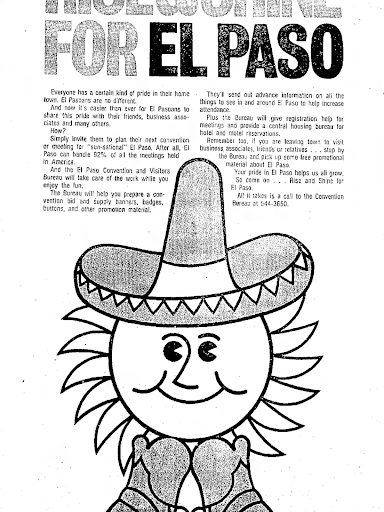
—Color photos by Steve Tures
